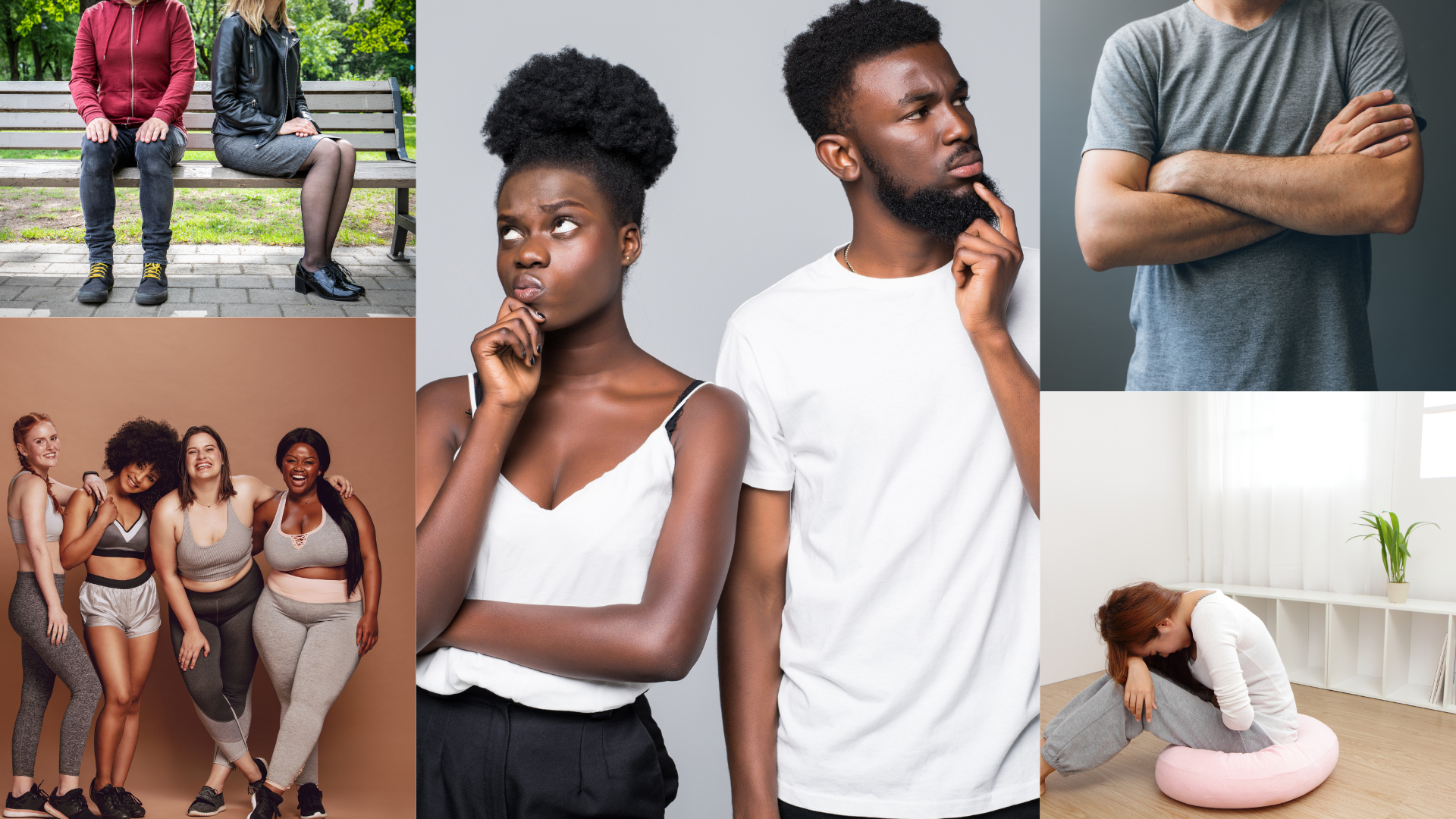
"Body Language Speaks Louder: Decoding Body Position and Type in Design and Filmed Presentations"
In the world of graphic design, the position and type of bodies depicted in illustrations, photographs, and iconography can communicate messages, evoke emotions, and shape the overall narrative of a design. Similarly, in filmed presentations, the body language of presenters can significantly impact the audience’s perception and engagement.


In print graphic design, the body position of characters or subjects can express a wide array of emotions and attitudes. A confident, upright posture might signify authority or leadership, while a slouched position could imply vulnerability or sadness. Moreover, the use of dynamic poses can add a sense of movement and energy to the composition, drawing the viewer’s attention and creating a captivating visual experience. In filmed presentations, the presenter’s body language can convey confidence and enthusiasm or create a sense of approachability and warmth.
Body type and diversity in design are also essential considerations in both graphic design and filmed presentations. Representing diverse body types and ethnicities in illustrations and visuals promotes inclusivity and allows a broader range of individuals to identify with the content. It is crucial for designers and presenters to avoid perpetuating stereotypes and to celebrate the beauty of all body shapes and sizes.


Furthermore, the juxtaposition of different body positions can create compelling visual narratives in both graphic design and filmed presentations. For instance, contrasting a relaxed figure with a tense one may portray conflict or highlight the theme of balance and contrast.
The choice of body language in branding and marketing is especially significant in both print and filmed presentations, as it can shape the audience’s perception of a brand’s values and personality. Brands seeking to communicate warmth and approachability may choose to depict characters with open, inviting body language, while those emphasizing strength and determination may opt for more assertive postures. Similarly, in filmed presentations, the presenter’s body language can support and reinforce the message they are conveying.

In conclusion, body language is a powerful tool in both graphic design and filmed presentations, enabling designers and presenters to communicate emotions, attitudes, and narratives through the positioning and type of bodies in their compositions. Embracing diversity and thoughtfully crafting body positions can foster inclusivity and create meaningful connections with audiences. Through strategic use of body language in both print and filmed presentations, designers and presenters can create designs and presentations that resonate deeply with their audience, foster authentic connections, and leave a lasting impression.
Categories
Recent Posts
- Maximize Your Reach: Essential Email Marketing Dos and Don’ts for Success July 9, 2024
- Social Media Day 2024 June 30, 2024
- Navigating the World of Social Media Advertising June 20, 2024
- The Power of Visual Content in Marketing April 8, 2024
- Hip Hopper Alert: Easter Bunny Steals the Show with Sunglasses Stunt March 31, 2024
- The Super Bowl Ads 2024 February 12, 2024
- Serving Our Client’s Social Media Platforms Branded Content February 5, 2024
- Days of Future Past January 31, 2024
- The Art of Blending Human Intuition and Data-Driven Insights January 31, 2024
- Beyond Intuition January 30, 2024
Recent Comments